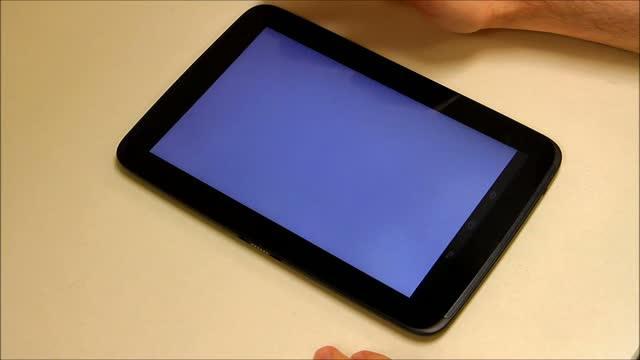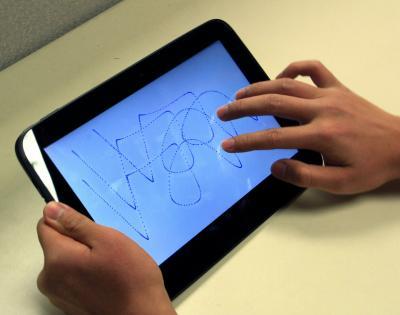"You can create any shape, using any number of fingers, and in any size or location on the screen," Lindqvist said. "We saw that this security protection option was clearly missing in the scientific literature and also in practice, so we decided to test its potential."
To do so, the researchers applied a generate-test-retest paradigm where 63 participants were asked to create a gesture, recall it, and recall it again 10 days later. The gestures were captured on a recognizer system designed by the team. Using this data, the authors tested the memorability of free-form gestures and invented a novel method to measure the complexity and accuracy of each gesture using information theory. Their analysis demonstrated results favorable to user-generated, free-form gestures as passwords.
To put their analysis to practice, the Rutgers researchers then had seven computer science and engineering students, each with considerable experience with touchscreens, attempt to steal a free-form gesture password by shoulder surfing. None of the participants were able to replicate the gestures with enough accuracy, so while testing is in its preliminary stages, the gestures appear extremely powerful against attacks. While widespread adaptation of this technology is not yet clear, the research team plans to continue to analyze the security and management of free-form passwords in the future.

As more people use smart phones or tablets to pay bills, make purchases, store personal information and even control access to their houses, the need for robust password security has become more critical than ever. A new Rutgers study shows that free-form gestures -- sweeping fingers in shapes across the screen of a smart phone or tablet -- can be used to unlock phones and grant access to apps. These gestures are less likely than traditional typed passwords or newer "connect-the-dots" grid exercises to be observed and reproduced by "shoulder surfers" who spy on users to gain unauthorized access.
(Photo Credit: Michael Sherman, Gradeigh Clark, Yulong Yang, Shridatt Sugrim, Arttu Modig, Janne Lindqvist, Antti Oulasvirta, and Teemu Roos; Rutgers University, Max-Planck Institute for Informatics and University of Helsinki.)

Researchers studied the practicality of using free-form gestures for access authentication on smart phones and tablets. With the ability to create any shape in any size and location on the screen, the gestures had an inherent appeal as passwords. Since users create them without following a template, the researchers predicted these gestures would allow for greater complexity than grid-based gestures offer.
(Photo Credit: Michael Sherman, Gradeigh Clark, Yulong Yang, Shridatt Sugrim, Arttu Modig, Janne Lindqvist, Antti Oulasvirta, and Teemu Roos; Rutgers University, Max-Planck Institute for Informatics and University of Helsinki.)
Source: Rutgers University